-
Study finds correlation between injection wells and small earthquakes
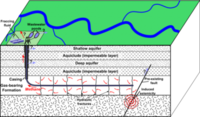
Most earthquakes in the Barnett Shale region of North Texas occur within a few miles of one or more injection wells used to dispose of wastes associated with petroleum production such as hydraulic fracturing fluids, according to new research
-
-
Study finds substantial water pollution risks from fracking
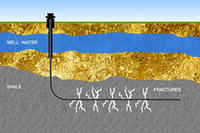
The Marcellus Shale region covers approximately 124,000 square kilometers from New York to West Virginia and is being intensely developed; a new study finds that the disposal of contaminated wastewater from hydraulic fracturing — commonly known as fracking — wells producing natural gas in the Marcellus Shale region poses substantial potential risks of river and other water pollution
-
-
Canadian company offers the first treatment to neutralize red mud
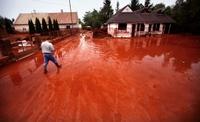
Red mud is the most significant waste product of the traditional Bayer process for aluminum production; the industry produces more than 100 million tons of red mud a year, of which less than 5 percent is be reused; the rest is stored in ponds and reservoirs, posing serious environmental and economic risk; on 4 October 2010, for example, a flood of toxic red mud devastated Hungary after a retaining dyke ruptured, causing an ecological disaster; Canadian company Orbite Aluminae offers a technology to tackle the aluminum industry’s most serious problem
-
-
Critics charge DHS chemical plant security program a failure
In 2006 Congress passed the Chemical Facility Anti-Terrorism Standards program, or CFATS, which set security standards chemical plants had to meet; there are 4,400 chemical plants covered by CFATS, of which 120 are considered especially dangerous, as a chemical release– accidental or as a result of a terrorist act — in any one of them would cause hundreds of thousands of casualties; after four-and-half years and $480 millions spent on CFATS, not a single plant of the 4,400 had been fully inspected; of the 120 riskiest plants, 11 had a preliminary inspection done; not a single site security plan has been approved
-
-
Forget blizzards and hurricanes, heat waves are deadliest

Tornadoes, blizzards, and hurricanes get most of our attention because their destructive power makes for imagery the media cannot ignore; for sheer killing power, however, heat waves do in far more people than even the most devastating hurricane; Hurricane Katrina and its floods, which devastated New Orleans and the Gulf Coast in 2005, exacted a death toll of 1,836 people; the heat wave which enveloped Europe during the course of three excruciating weeks in August 2003 of that year, killed an estimated 70,000 people
-
-
Identifying potential pre-quake signals
Changes in seismic velocity — changes in the speeds at which seismic waves move through the Earth’s crust — have been identified during and after many earthquakes; do these changes also happen before an earthquake, and could they be measured as a way to predict a quake on the way?
-
-
Are large earthquakes linked across the globe?
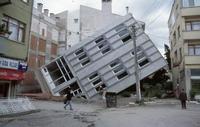
The past decade has been plagued with what seems to be a cluster of large earthquakes, with massive quakes striking Sumatra, Chile, Haiti, and Japan since 2004; some researchers have suggested that this cluster has occurred because the earthquakes may be “communicating” across large distances, possibly triggering each other; a new analysis, however, that the cluster could just as well be the result of random chance
-
-
Improving oil recovery, aiding environmental cleanup
Researchers have taken a new look at an old, but seldom-used technique developed by the petroleum industry to recover oil, and learned more about why it works, how it could be improved, and how it might be able to make a comeback not only in oil recovery but also environmental cleanup
-
-
Federal mapping tool used in Gulf spill expanded to Arctic
A new federal interactive online mapping tool used by emergency responders during the Deepwater Horizon oil spill has been expanded to include the Arctic, and will help address numerous challenges in the Arctic posed by increasing ship traffic and proposed energy development
-
-
Earthquake risk looms large in the Pacific Northwest
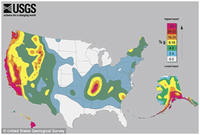
A comprehensive analysis of the Cascadia Subduction Zone off the Pacific Northwest coast confirms that the region has had numerous earthquakes over the past 10,000 years, and suggests that the southern Oregon coast may be most vulnerable based on recurrence frequency
-
-
Under industry pressure, DHS drops chemical plant employee screening proposal
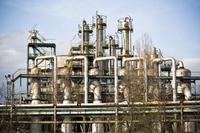
Security experts agree that short of a nuclear attack on a U.S. city, the most casualty-heavy disaster would occur as a result of an accident in, or a terrorist attack on, a chemical plant which would release a cloud of toxic fumes; there are about 15,000 plants in the United States which produce, process, use, or store volatile and toxic chemicals; more than 300 of the these plants are so close to large population centers, that a chemical release in any one of them would cause more than 50,000 casualties; DHS wanted to have employees in these plants screened for potential ties terrorism, but the chemical industry objected, saying this would be too costly; last Thursday DHS pulled the proposal
-
-
New, affordable instant warnings of bridge collapse
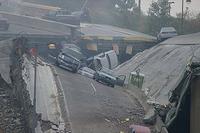
The Federal Bureau of Transportation lists nearly 70,000 U.S. bridges as “structurally deficient,” requiring extra surveillance; in addition, more than 77,000 others are categorized as “obsolete” — exceeding their intended lifespan and carrying loads greater than they were designed to handle; researchers developed a new technology for monitoring these 150,000 aging U.S. highway bridges
-
-
Men in maritime disasters save themselves first --“women and children first” is a myth

Since the sinking of the Titanic, there has been a widespread belief that the social norm of “women and children first” gives women a survival advantage over men in maritime disasters, and that captains and crew members give priority to passengers; a new study find that the Titanic disaster, in which 70 percent of the women and children on board were saved compared to 20 percent of the men, is a glaring exception to the rule; during maritime disasters, men use their relative strength to save themselves; what is more, studies of human behavior during natural disasters show the same results: in life-and-death situations, it is every man for himself
-
-
Measuring DHS effectiveness monitoring chemical plant safety standards
The events of 9/11 triggered a national re-examination of the security of facilities that use or store hazardous chemicals in quantities which, in the event of a terrorist attack, could put large numbers of Americans at risk of serious injury or death; the GAO issued a report on how DHS ensures compliance with chemical facilities security standards
-
-
Science group: storing spent nuclear fuel in dry casks significantly safer then wet pools storage
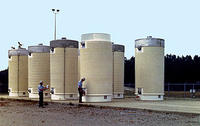
An NRC report on the lessons of the Fukushima disaster says that storing spent nuclear fuel in wet pools is “adequate” to protect the public; a science groups says there is a significantly safer way to store the 55,000 tons of radioactive waste currently stored by the 104 nuclear power plants operating in the United States: transferring the spent fuel to dry casks
-
More headlines
The long view
Trump Aims to Shut Down State Climate Policies
President Donald Trump has launched an all-out legal attack on states’ authority to set climate change policy. Climate-focused state leaders say his administration has no legal basis to unravel their efforts.
